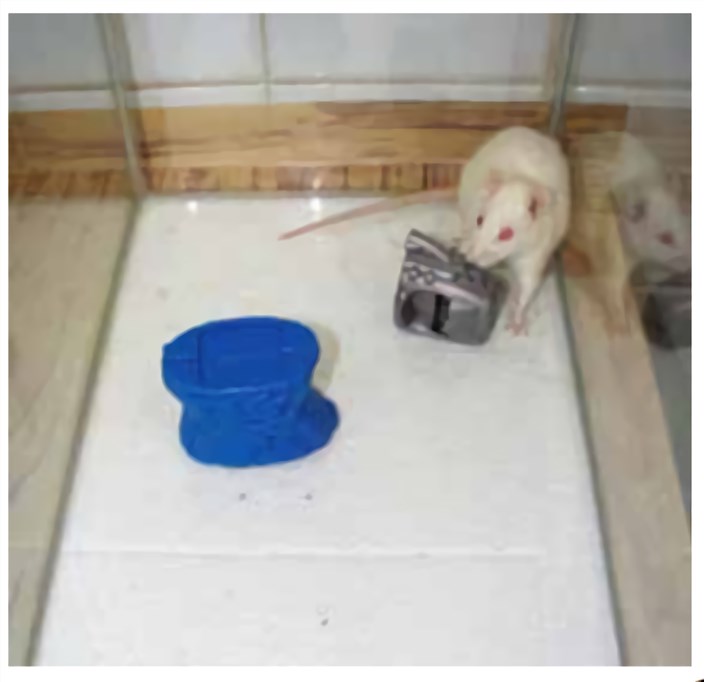Novel Object Recognition Task
The novel object recognition (NOR) is a widely used animal model for the investigation of memory alterations. Creative Biolabs uses this task to evaluate the effect of drug candidates on short-term memory, intermediate-term memory, and long-term memory, by assessment of the retention interval, that is, amount of time for which animals must retain memory of the sample objects placed during the recognition phase before the test phase, when one of the familiar objects is replaced by a novel one.
 Fig.1 The NOR task. (Coronassamano et al. 2016)1,3
Fig.1 The NOR task. (Coronassamano et al. 2016)1,3
Introduction of the Novel Object Recognition Task
The NOR task is based on rodents' natural curiosity to explore their immediate environment. The test consists of a sample phase and a test phase. In the sample phase, the animal is given 10-15 min to freely explore two identical objects (object A), after which it will be returned to the home cage. After a delay, the animal is returned to the test arena where one of the sample objects has been replaced by a new one (object B). During this test phase, the time in contact with the objects is measured and a preference index is calculated. The assumption is that the animal would spend more time exploring the novel object than the familiar one, while equal time on the exploration of both objects suggests that the animal does not remember seeing the sample object.
Features of the Novel Object Recognition Task
- This is a relatively new test that has gained popularity because it is based on animals' natural preferences instead of a learned response. Thus, it does not require food or water deprivation for motivation or a lengthy training. Nevertheless, it does require thorough habituation to the test environment.
- One advantage of novel object recognition is the one-trial learning. The performance of the animals deteriorates as the delay between the sample and the test trial increases. By comparing the performance at a short and a long retention interval, for instance, between 5 min and 24 h, one can in many instances distinguish a true memory impairment from the non-mnemonic cause of impaired performance.
![Fig.2 4,5,6,7-tetrahydroisoxazolo[5,4-c]pyridin-3-ol (THIP) impairs novel object recognition. (Whissell et al. 2013)](images/Novel-Object-Recognition-Task-2.jpg) Fig.2 4,5,6,7-tetrahydroisoxazolo[5,4-c]pyridin-3-ol (THIP) impairs novel object recognition. (Whissell et al. 2013)2,3
Fig.2 4,5,6,7-tetrahydroisoxazolo[5,4-c]pyridin-3-ol (THIP) impairs novel object recognition. (Whissell et al. 2013)2,3
Creative Biolabs has a large battery of well-designed and validated test to assess memory and cognitive functions in rodents. Besides the novel object recognition task described here, we also provide the following tests:
Creative Biolabs provides highly customized behavioral tests to suit specific scientific needs of our clients. Moreover, new behavioral tests of cognition are constantly developed and validated. Moreover, these behavioral tests are widely used in combination with different neurological disease models to test the efficacy of drug candidates. Our comprehensive list of neurological disease models is summarized in the following chart:
For more information, please contact us or send us an inquiry.
References
- Coronassamano, G.; et al. Fus1 KO mouse as a model of oxidative stress-mediated sporadic Alzheimer's disease: circadian disruption and long-term spatial and olfactory memory impairments[J]. Frontiers in Aging Neuroscience. 2016, 8(Pt A):268.
- Whissell, P. D.; et al. Acutely increasing δGABAA receptor activity impairs memory and inhibits synaptic plasticity in the hippocampus[J]. Frontiers in Neural Circuits. 2013, 7:146.
- under Open Access license CC BY 4.0, without modification.
For Research Use Only.
